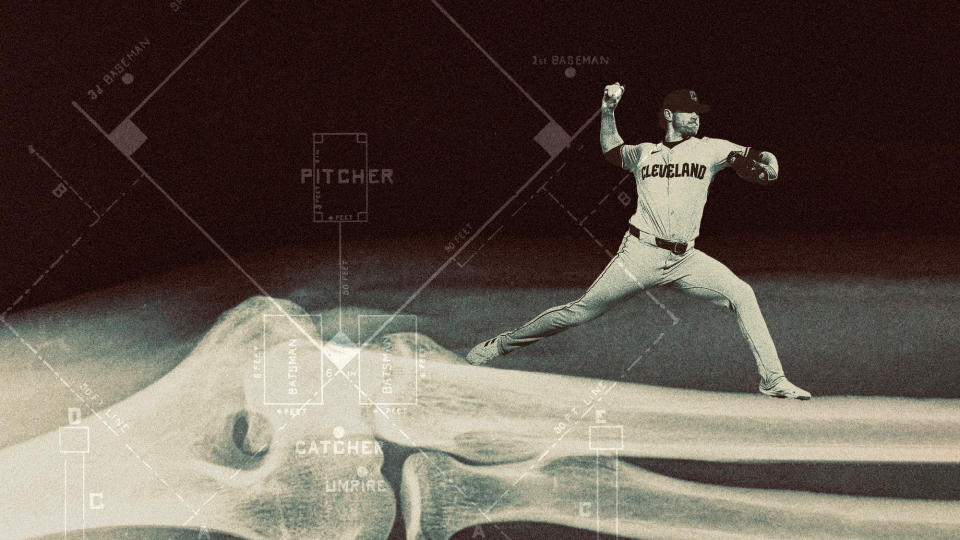Major League Baseball is facing an epidemic of pitcher's injuries

Being a pitcher in Major League Baseball (MLB) means that, more likely than not, you will injure your arm, hand or wrist at some point. But while these types of injuries have always been common among MLB pitchers, evidence shows that the number of pitching injuries has been steadily rising over the past few years — and seems to have reached a breaking point as the 2024 season has gotten underway.
The last four American League Cy Young winners, Gerrit Cole, Justin Verlander, Robbie Ray and Shane Bieber, are all on the injured list, with Bieber slated to miss at least a full year following elbow surgery. In recent weeks, several other pitchers also got hurt: Jonathan Loáisiga, Eury Pérez, Nick Pivetta, Spencer Strider and Framber Valdez. And the list goes on: Ace starters such as Sandy Alcantara, Jacob deGrom, Clayton Kershaw, Germán Márquez, Shohei Ohtani and Justin Steele have also battled recent injuries.
Overall, out of the 166 players who began this season on an MLB team's injured list, 132 were pitchers — nearly 80%. What is causing all of these pitching injuries?
Why are so many pitchers getting hurt?
MLB is "conducting a wide-ranging study of pitchers at all levels to examine the origins of the [injuries] and help develop recommendations to address it," a spokesperson for the league said to The Washington Post. While this study is not expected to be finished before the end of this season, analysts — and the Major League Baseball Player's Association (MLBPA) — claim to have identified the culprit of the injuries: the pitch clock.
The clock, first implemented in 2023, is designed to make games move faster, and gives pitchers 18 seconds to rest between pitches when there are runners on base. The MLBPA blames this short time between pitches for the increased injuries, and the group's "concerns about the health impacts of reduced recovery time have only intensified," the MLBPA said in a statement.
"Of course the pitch clock could be contributing to the increase in pitcher injuries" when it comes to anecdotal cases, CBS Sports said. This is because the clock "affords pitchers less recovery time between pitches, and thus they are making more pitches while fatigued," said CBS, and "greater fatigue equals greater injury risk."
However, one group that does not believe the pitch clock is causing injuries is MLB itself. After the MLBPA's statement, MLB fired back, stating that blaming the pitch clock "ignores the empirical evidence and much more significant long-term trend ... of velocity and spin increases that are highly correlated with arm injuries." MLB also cited a study from Johns Hopkins University which "found no evidence to support that the introduction of the pitch clock has increased injuries," though this study has not been published.
While the pitch-clock conclusion is up in the air, MLB's assertion that changes in pitching velocity are causing injuries also seems to hold water. The elbow's ulnar collateral ligament "cannot withstand the torque modern pitchers are imposing on it. It's that simple," Sports Illustrated said. While trying to make themselves throw harder, pitchers "forget about the UCL, a ligament with notoriously poor blood flow," said Sports Illustrated.
"How hard you throw has emerged as the biggest issue," Glenn Fleisig, the biomechanics research director of the American Sports Medicine Institute, said to Sports Illustrated. The "faster you pitch, the higher the torque on the elbow," Fleisig said, and pitchers "are going beyond what the body can withstand."
What can be done to make pitching safer?
The aforementioned study being conducted by MLB does not have a clear timetable. In the meantime, some possible solutions have been raised by people connected to the game. Pitchers themselves should "[factor] heavily in MLB's decision-making," ESPN said. They should also be "entitled to one or two time-outs a game when they feel discomfort," and pitchers should be allowed to use an "accepted grip agent to help with balls they believe remain inconsistently manufactured," said ESPN.
But at the end of the day, no matter the cause, being an MLB pitcher is "incredibly stressful on the arm — the shoulder, the rotator cuff, and most of all, that tiny little ligament whose efficacy means the difference between winning and losing," USA Today said. So pitchers should not "expect a quick fix – because there may never be one."

 Yahoo Sports
Yahoo Sports 
